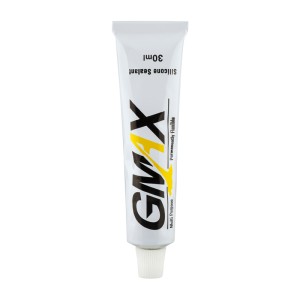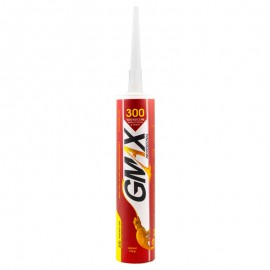
Pomade Silicone
Aquarium adhesive or silicone adhesive is a type of liquid adhesive primarily used for sealing and waterproofing purposes. This type of adhesive is a chemical adhesive that is polymerized and made from a combination of organic materials. The predominant elements in these adhesives are silicone and oxygen, which provide high resistance to temperature changes and moisture penetration. This also results in a strong molecular structure. These characteristics enhance the strength and stability of the adhesive, allowing it to be used for bonding various surfaces. They are commonly sold in pressure tubes for convenient use. These adhesives are resistant to water, moisture, temperature, sound, etc., which is why they were predominantly used in the past for aquarium construction. Hence, this category of adhesives is also referred to as aquarium adhesives. Given the mentioned properties, they can also be used for other purposes such as sealing glass in buildings, installing sinks and washbasins, and fixing building tiles, among others.
technical specifications
|
Density |
0.97 g/ml |
|
Temperature Resistance |
Between -50 to 250 c |
|
Vulcanization Speed |
15-20 minutes |
|
Curing Speed |
1.5 mm/day |
|
Losing Volume |
5.5% (DIN 52451) |
|
Shore a Hardness |
20 (ISO 868) |
|
Steady Elasticity |
25% (DIN 52451) |
|
Elongation at Break |
400% |
|
Power of Breaking Potential |
2.3 MPa |
|
Maximum Joint Measures |
30 mm |
|
Heat Insulation Quality |
0.17 w/km (DIN 53612) |
|
Elasticity |
200% (ISO 8339) |
|
NCT WT |
30 gr |
|
colors |
transparent |
product usage
Due to its unique properties, silicone adhesive is used in many industries and household applications. Below are the different uses of silicone glue:
Construction: Silicone sealant is used to seal joints between tiles, glass, and sinks.
Automotive industry: This adhesive is used for sealing and connecting various engine parts and brake systems, because it has high temperature tolerance and resistance to oil and chemicals.
Electronics: In the electronics industry, silicone adhesive is used to protect electronic components against moisture and dust.
Medicine: Due to its non-toxicity and compatibility with the human body, silicone glue is used in the manufacture of prostheses and medical equipment.
Household Uses: Silicone glue is used to repair household items, seal windows and doors, and even in arts and crafts.
Piping: It is used to seal connections and prevent water leakage in piping systems.
Carpentry: gluing wooden parts and increasing the strength of joints in carpentry works is another application of this glue.
Aquarium: Due to its high water resistance, silicone glue is suitable for building and repairing aquariums.
Due to its unique features such as resistance to temperature and humidity, silicone glue is considered one of the necessary and widely used tools in various industries and daily life.
how to maintain
Keep away from moisture and on a wooden pallet with a maximum of 6 cartons in height.
Store at -10 to +50 degrees Celsius.
How to use
- Before proceeding to the injection of glue, it is necessary to thoroughly clean the desired surfaces. In case of sealing, the glass should be cleaned well and free of any dust.
Methods for removing aquarium glue from surfaces
- If silicone glue has been spilled on your hands or work clothes, you can wipe it off the surface with a cloth or nylon before the glue dries. Nylon is easier to use in such cases. After removing the glue, you can use warm water and detergent to prevent the effect.
- In cases where you use glue for sealing and some of it exceeds the specified limit, you can use nylon or a cloth to clean the surfaces.
- If the glue dries, if it is possible to remove the glue with a spatula, you can get help from a spatula. To eliminate its effect, if it is on the fabric, you should use a strong detergent.
- If it is not possible to remove the glue with a spatula, you can use solvents such as acetone or vinegar.
- In some cases, by heating the glue with the help of a hairdryer, its texture will be softer and can be separated.




